During start-up, operator should reduce conditions that cause sloughing
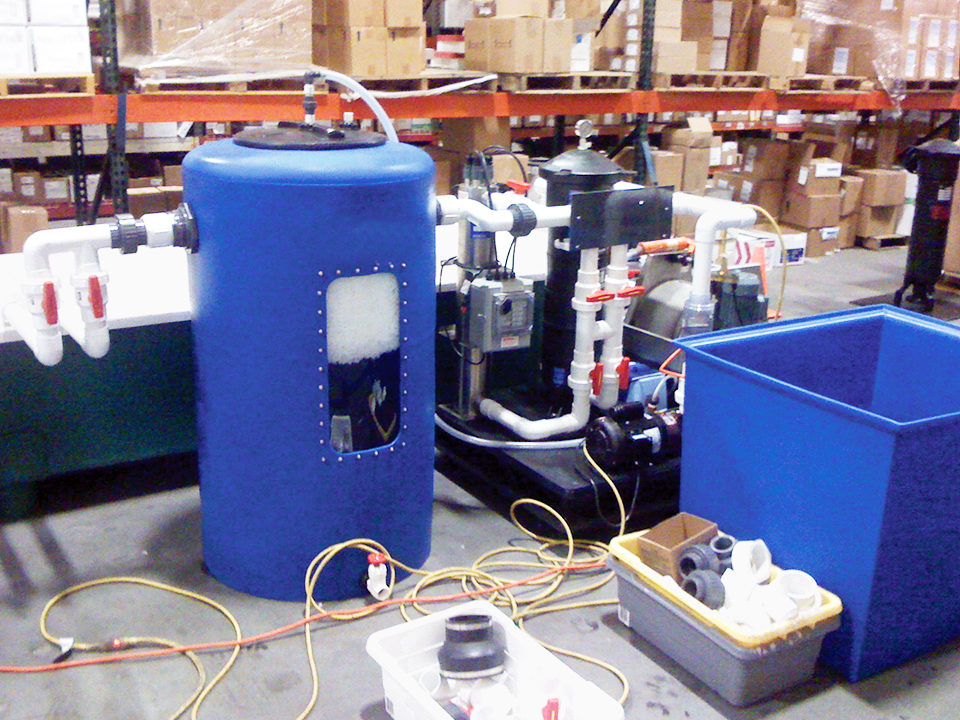
To start a biofilter together with a source of nitrifying bacteria, you must provide the conditions that will encourage the growth of the bacteria. The following procedure assumes that animals are not yet in the system. Adding inorganic nutrients to support the growth of nitrifying bacterial cells will create concentrations of ammonia and nitrite that can be lethal to your stock.
1. Prepare water chemistry
The system should be operating and passing water through the biofilter. If the culture tank is not yet ready for use, it is possible to recirculate water only through the biofilter unit. This situation may arise when starting a newly built facility.
System water should be free of residual chlorine that may have been used for disinfection or pathogen control. Additionally, adjust the pH, salinity, alkalinity and hardness to match the requirements of the incoming stock.
2. Provide alkalinity, a carbon source
Carbon dioxide dissolved in the system water is a source of carbon for the developing bacteria cells, but carbonate and bicarbonate ions are carbon sources that are more easily added and controlled. Add sodium bicarbonate, or common baking soda, to increase alkalinity. Baking soda is inexpensive and safe to use. Increase the system alkalinity to about 100 mg/L initially. Alkalinity at this level supports the growth of Nitrosomonas bacteria, but the authors have had better success in establishing Nitrobacter bacteria at higher alkalinity levels of 150-200 mg/L.
When Nitrobacter becomes established, alkalinity can be allowed to decline to operational levels. As a rule, to raise the alkalinity by 10 mg/L, add 53 g of sodium bicarbonate for every 3,785 L of system water capacity.
3. Adjust pH, if needed
With alkalinity at the levels suggested above, maintaining the proper pH is usually not a problem. A range of 6.8 to 7.2 is best.
The lower healthy limit of pH for nitrifying bacteria, about 6.8, is usually not reached unless a high concentration of carbon dioxide becomes elevated. During the start-up of a new system, this is unlikely, unless the source water is high in carbon dioxide. Circulation and aeration or degassing of the water in the system can help reduce carbon dioxide concentration.
4. Provide ammonia, nitrite
To start up a biofilter, add ammonium hydroxide, or unscented household ammonia used for cleaning, which is an aqueous solution of ammonia. Ammonium chloride and ammonium nitrite also are commonly used.
Add sufficient ammonium hydroxide to raise the total ammonia level to between 3 and 5 mg/L. This should allow good detection by most testing methods. Generally, 60 mL of 10 percent aqueous clear household ammonia raises the ammonia concentration of 3,785 L of system water by about 1.6 mg/L.
Adjustments will be necessary if you use a different concentration of aqueous ammonia. Start with a minimum amount, allow enough time for thorough mixing through the system and then test for the ammonia concentration. If more is needed to increase the concentration in the system to 3-5 mg/L, add more incrementally.
5. Introduce nitrifying bacteria
Introducing bacteria can accelerate the biofilter acclimation process. If using a commercial preparation of bacteria, follow the manufacturer’s recommendations during the previous steps and in adding the bacteria at the rates and schedules directed. Manufacturer directions may suggest that bacteria be added in several portions.
The most effective way to introduce bacteria is to move media from an acclimated system operating under similar culture conditions. If introducing already colonized media or other forms of bacteria, add them at this time.
6. Monitoring water quality
Water quality parameters should be monitored regularly. Ammonia, nitrite, pH, temperature and alkalinity are the primary parameters to test. Accurate and repeatable methods for measuring ammonia and nitrite concentrations should be used. Operators should be able to compare changes in water quality from one day to the next with confidence.
Water samples should be collected from the discharge of the biofilter. Samples should be collected from the same place at the same time each day, and persons conducting tests should follow the same procedures. Standardization, routine and attention to detail will ensure accurate information for making operational decisions.
It is helpful to graph both ammonia and nitrite concentrations over time, which supplies a visual concept of biofilter development. Figure 1 shows the characteristic curves associated with biofilter start-up. It is important to note that this example start-up at North Carolina Fish Barn occurred over a short period of time because of the warm 28 degrees C temperature under which this particular trial was conducted.
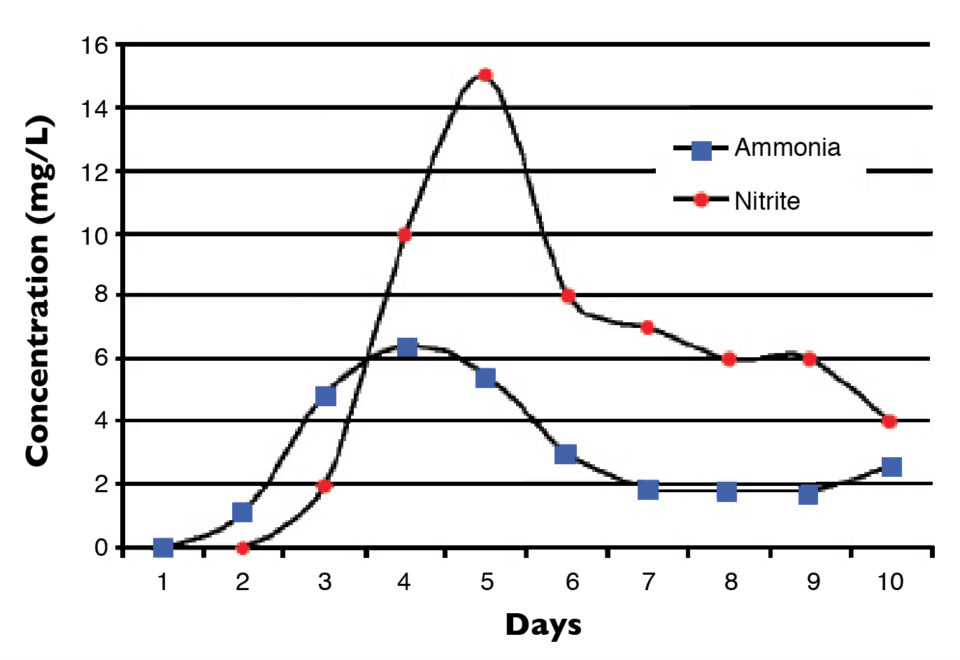
While the numbers vary among different cycles, systems and biofilters, the shapes and relationships of the curves should be about the same. Initially, ammonia concentration increases to a high point and then declines. After a lag period, nitrite concentration begins to increase and then declines.
In Figure 1, note the trend for declining nitrite concentration. The top of the nitrite curve represents the point at which Nitrobacter bacteria developed in numbers sufficient to consume more nitrite than was produced in or added to the system. Thus, the nitrite concentration decreased.
This trend continued until nitrite concentration leveled off. At that point, if nitrite and ammonia levels were acceptable for the species being cultured, stocking could occur. If stock were present in the system, feeding could begin at low levels, and normal production operations could commence.
Tips for faster biofilter start-up
Temperature can be raised slightly to increase the rate of reaction of biological and biochemical processes, thus speeding the development of a nitrifying bacteria population. Increase the temperature no more than 3 to 5 degrees C above the anticipated culture temperature.
The total volume of a system can be reduced by operating the culture tanks with a lower water level during the start-up of the biofilter. With a smaller volume of water, temperature can be changed more quickly, and the quantity of nutrients required for dosing the biofilter is reduced, which makes the process more cost-effective. Research has shown that a biofilter started with freshwater and slowly acclimated to marine conditions provides a faster start than beginning with saltwater.
Finally, it can be difficult to start a biofilter containing new media due to conditions that would promote sloughing of cells, which is desirable under normal operations. However, during start-up, the operator may want to reduce the conditions that cause this sloughing.
With moving-bed biofilters, bacteria can be slow to colonize because of excessive agitation or aeration of the media bed. Reducing the physical agitation of the media bed by reducing aeration and/or water flow through the bed can help. Trickling filters may benefit from starting up in a “flooded” condition. Anything to reduce the loss of bacterial cells during start-up will hasten the process.
Editor’s Note: This article is based on “How to Start a Biofilter, a fact sheet by the authors published by the United States Department of Agriculture Southern Regional Aquaculture Center (SRAC Publication 4502, 2012).
(Editor’s Note: This article was originally published in the March/April 2015 print edition of the Global Aquaculture Advocate.)
Authors
-

Thomas M. Losordo, Ph.D.
Principal Scientist and Chief Engineer
Pentair Aquatic Eco-Systems, Inc.
400 Regency Forest Drive, Suite 300
Cary, North Carolina 27518 USA[109,111,99,46,114,105,97,116,110,101,112,64,111,100,114,111,115,111,108,46,109,111,116]
-
Dennis P. DeLong, MSM
Manager of Customer Advocacy
Pentair Aquatic Eco-Systems, Inc.
400 Regency Forest Drive, Suite 300
Cary, North Carolina 27518 USA
Tagged With
Related Posts
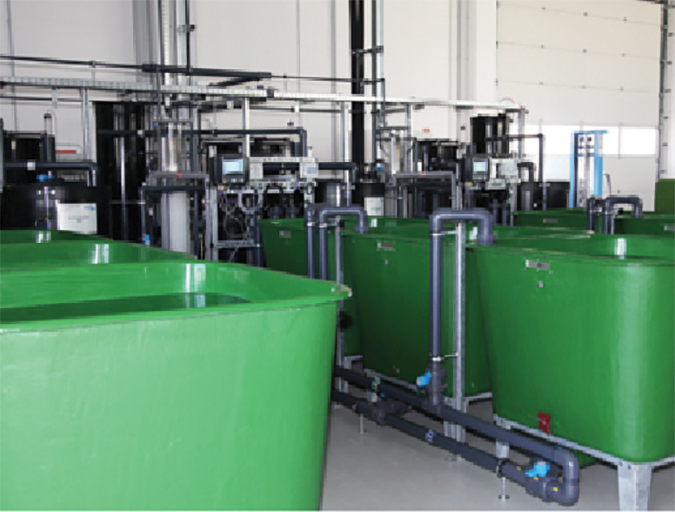
Health & Welfare
Biofilter inoculation in recirculating aquaculture systems
Biological filters are essential parts of recirculating aquaculture systems that transform toxic fish compounds such as ammonium and nitrite into less-harmful nitrate. The authors tested the convenience and efficiency of three methods for the initial inoculation of aerobic biofilters.
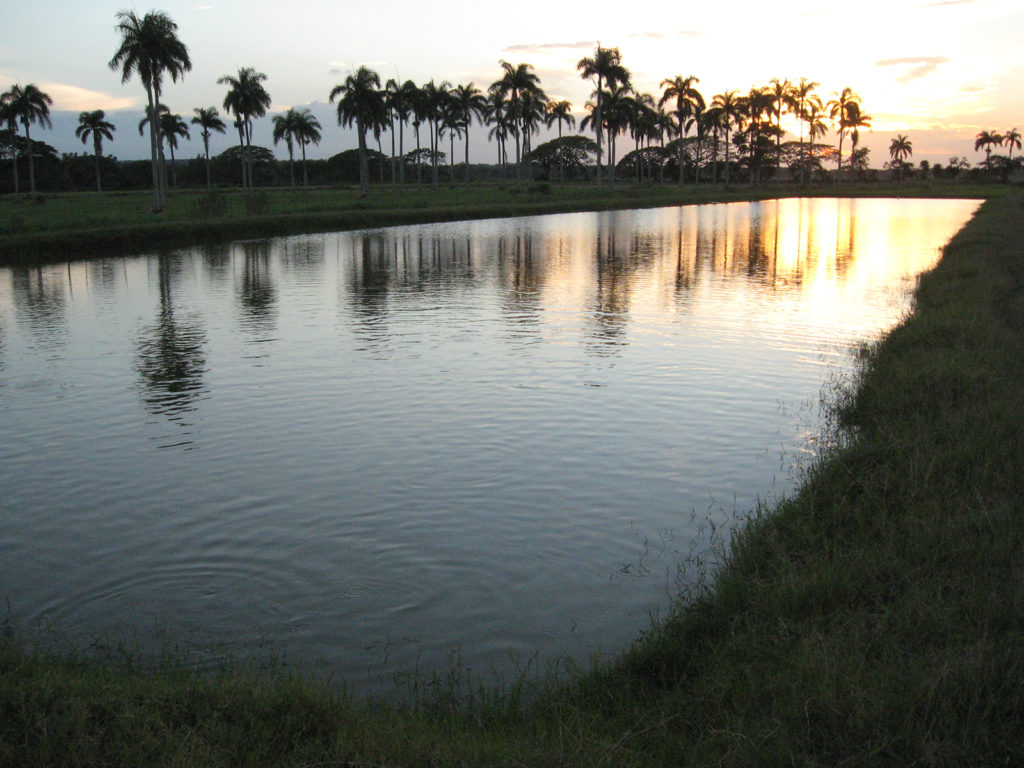
Responsibility
The impact of atmospheric carbon dioxide, alkalinity in freshwater aquaculture
Changes in atmospheric carbon dioxide concentration should have little effect on rising alkalinity concentration in aquaculture systems. Climate change is of greater concern in freshwater aquaculture than is an increase in alkalinity.

Responsibility
Defining ranges for water quality variables presents complex, challenging process
The creation and application of reference tables for acceptable concentration ranges of physical and chemical water quality variables for culture organisms would be challenging due to the differing tolerances found among the many farmed species.
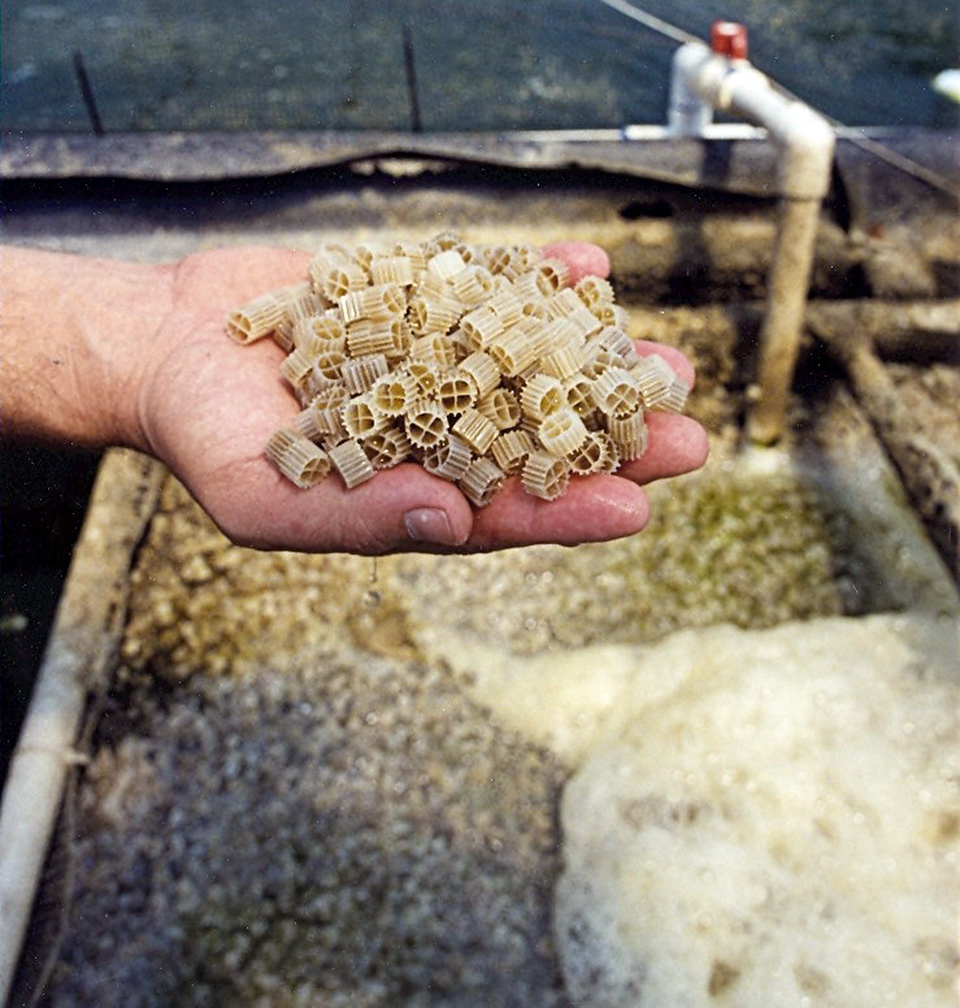
Innovation & Investment
Recirculating aquaculture technology, part 1
Biological filtration is one of the critical required unit processes in recirculating aquaculture systems. Non-corrosive filter media with large amounts of surface provides area for nitrifying bacteria cells to colonize.


